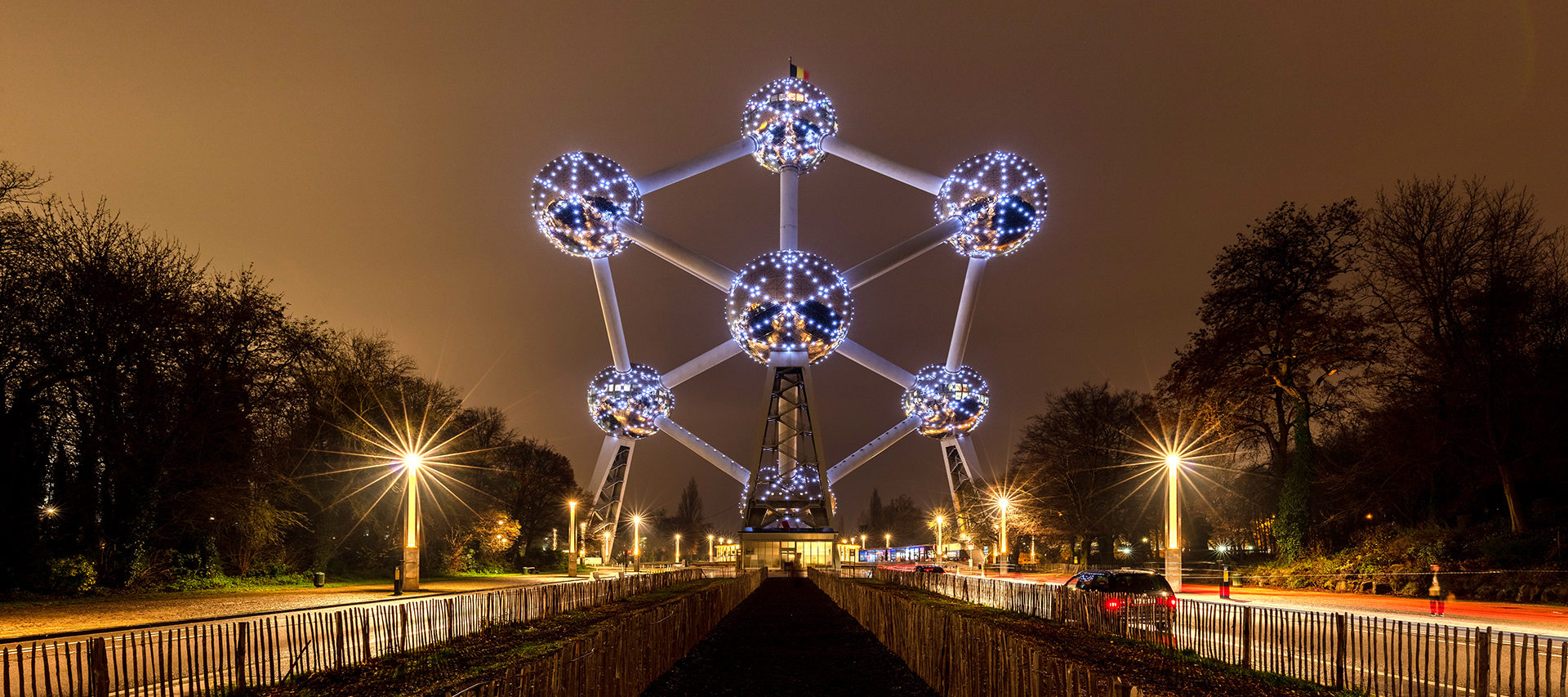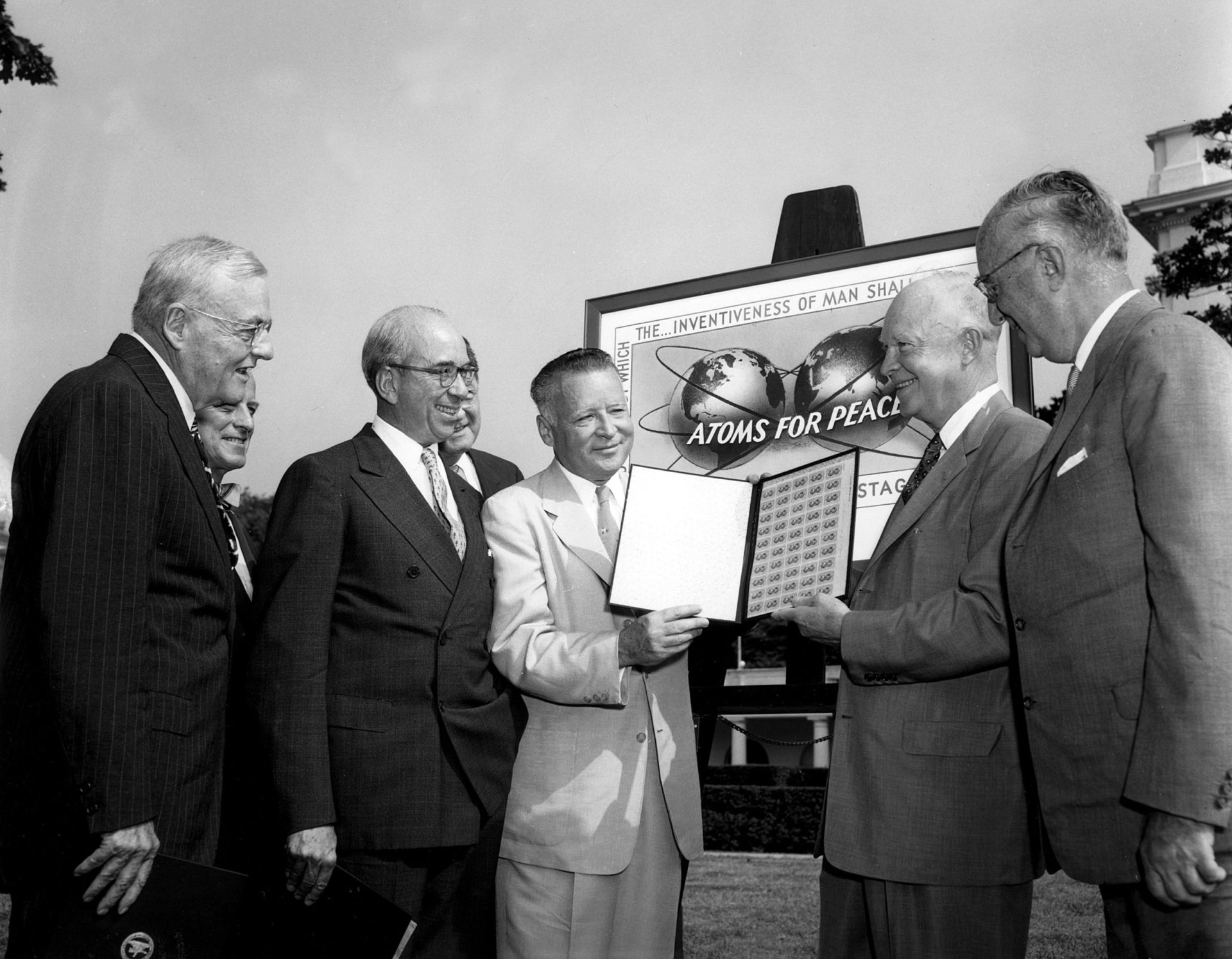

Thomas Hochman, co-author of “A Nuclear Renaissance?” (Fall 2022), and Taylor Dotson, co-author of “Democracy and the Nuclear Stalemate” (Fall 2020), discuss whether the industry can overcome its obstacles.
Taylor Dotson: The essay “A Nuclear Renaissance?” was an excellent review of the barriers to nuclear energy. But I worry that too little has changed to be optimistic about a revival.
You accurately diagnose the historical mistake: Failing to anticipate the complexity of nuclear energy, especially as the light-water design was scaled up faster than we were capable of learning. Mistakes fed growing mistrust, contributing to a regulatory system that still tends toward antagonism and over-prescription.
While regulation is opening up, I worry about scale and pacing. The reactors from NuScale Power are “small,” but the proposed plants are still hundreds of megawatts. Chasing economies of scale is driving nuclear firms to build too big, too fast once again, before really learning about their designs. Spiraling costs and compounding delays are not heartening. More nuclear energy may very well mean more costly electricity. And public failures could make nuclear advocates look like they are, again, over-promising and under-delivering.
We also face the risk of locking in (once again) a suboptimal design. This is the tendency of big, capital-intensive technologies that depend on specialized infrastructure. Long lead times and sunk-cost thinking thwarts intelligent trial and error learning. And firms will likely bandwagon around the first seemingly successful design, potentially prematurely.
Pursuing “big” nuclear is a hazardous gamble. Participants get very few rolls of the dice, and the lessons of betting wrongly are costly. As I pointed out in the 2020 essay “Democracy and the Nuclear Stalemate” in these pages, market-led wind turbine innovation was aided by starting little and scaling gradually. For nuclear this means small small nuclear reactors, if not microgrids, providing power for military bases, hospitals, and college campuses, where grid independence and reliability matters most. I worry that the claimed mandate to combat climate change will mirror the imperatives of the past (a peaceful atom and Soviet competition) and lead us to overlook the advantages of incrementalism.
Thomas Hochman: Thanks for your note, and for raising these important questions.
I should first point out that, like you, I am far from optimistic about the prospect of a nuclear revival. As Nate [Hochman, the article’s co-author] and I wrote in our piece, “the odds remain stacked against a future nuclear industry.” Of course, I’m hopeful that our nuclear sector will survive — but I’m under no illusion that there’s a simple way forward.
While your economic argument is also reasonable, I think that it misses some important context. It’s true that nuclear firms will make costly mistakes during scale-up, and I agree that the lack of broad-based standardization remains a problem — it’s just not clear to me that we have a better alternative.
America needs more than just cheap energy. It needs reliable and clean energy that is at the same time dispatchable — meaning that output can be adjusted based on demand to balance out fluctuations in less-consistent energy sources like solar and wind. And it needs energy whose supply doesn’t hinge on the whims of foreign actors. Does such an energy source currently exist? Natural gas is cheap, reliable, and dispatchable, but it’s a fossil fuel that remains vulnerable to global supply shocks. Solar is cheap and clean, but is unreliable and non-dispatchable. Nuclear is reliable and dispatchable, and yet it’s still very expensive.
This is all to say that our power mix must balance factors that extend beyond the scope of simple cost-comparisons. As the United States moves to decarbonize — and especially after the passage last August of the Inflation Reduction Act, which will send hundreds of billions of dollars to the clean energy sector — this balance will prove more important than ever.

To be clear, I think the concerns you’ve mentioned here are entirely valid — nuclear firms may try to go too fast too quickly, and their failures may prove costly. But just as nuclear advocates should be wary of treating the atom as some sort of panacea, those who recognize nuclear’s pitfalls should avoid writing it off completely. Nuclear’s benefits — its reliability, dispatchability, and its low carbon footprint — will be increasingly crucial in the coming years. We can’t afford to give up on it.
Dotson: Thanks for the thought-provoking response.
I agree that it would be unwise to give up on nuclear energy. Today’s solar and wind technology enthusiasm might eventually look as foolhardy as previous generations’ “too cheap to meter” nuclear cheerleading seems to us today. New problems may develop as renewables scale up: in grid stability, in mining, and in disposal. To extinguish nuclear energy as a technological possibility would be short-sighted.
Yet innovation is powered by belief. Just as scientists stick resolutely by their theories through tough times, hoping to be vindicated later on, societies often carry on with technologies, even when they initially fail to perform. Early metal airplanes, for instance, were inferior to their wooden cousins: heavier, more expensive, and not any more durable or fire safe. But faith in metal as “the future” persisted through these difficulties. The same was true for renewables when they were underpowered and costly.
You are correct that nuclear energy today offers advantages in reliability and dispatchability. But it competes not just with today’s renewable energy but with beliefs about what those technologies will eventually offer. Demonstrated progress in lowering costs and successfully increasing efficacies at scale makes renewables alluring. What awes us now is the future of solar and wind energy, even though the necessary advances in battery technology have yet to materialize.
Nuclear energy enjoyed a similar faith and then lost it. When the nuclear future no longer dazzles, practical questions loom even larger. Can positive learning curves be realized? Can reactors be built on schedule? Absent a larger governmental commitment to subsidize and steer nuclear R&D toward these specific problems, nuclear is unlikely to regain its former luster.
Can the nuclear industry reestablish the idea that its technology is one that belongs in the future and not the past? Reliability, dispatchability, and low-carbon intensity are strong arguments. But will they be enough?
Hochman: Your point about belief is an important one. Sometimes a firm commitment to “making it happen” can be just as crucial to a technology’s success as features like cost and reliability. And as you note, nuclear once enjoyed this sort of commitment, and then lost it. Renewable energy benefits from such a commitment today.
But to me, this is an argument for nuclear energy, not against it. As we wrote in our piece, “The difficult question is not whether we ought to have nuclear power in the United States — the answer is ‘yes’ — but whether or not we will.” We seem to agree that giving up on nuclear would be foolish, while recognizing that our nuclear industry will face an uphill battle in the coming years. Shouldn’t this recognition push us to fight for it even more fiercely?
Restoring belief in atomic power will be a challenging but necessary project. You are right to ask whether learning curves can be realized, and whether reactors can be built on schedule — but the only way we’ll find out is by actually building them.
Finally, I should point out that we have indeed started to see a renewed governmental commitment to nuclear power. The Inflation Reduction Act provides a production tax credit for existing reactors, production and investment tax credits for new reactors, and a $700-million investment in our domestic uranium supply-chain. Chris Colbert, chief financial officer at NuScale Power, has called these provisions “transformative.”
The ongoing energy crisis, too, has led many American leaders to reconsider their anti-nuclear stances. As recently as November 21, the Biden administration granted Pacific Gas & Electric $1.1 billion to keep California’s Diablo Canyon nuclear plant running. This move came after California governor Gavin Newsom announced his support for the plant’s continued operation — a significant reversal from his years-long campaign to shut Diablo Canyon down.
Of course, I wish that America would be more proactive with its energy policy and not wait for a global crisis to kick its nuclear investment back into gear. But with luck, necessity will breed progress — and a renewed belief in nuclear power will follow.
Dotson: You are correct to point out the Inflation Reduction Act’s significant support of nuclear energy. Production and investment credits, along with improving domestic uranium supply for advanced reactors, are a big help.
And perhaps you are right that the tide of public opinion is already turning. Another hopeful sign is TerraPower’s Natrium project in Wyoming, due to be installed at a soon-to-be decommissioned coal plant, with the intent of employing its existing workforce. Walking away from coal doesn’t have to mean leaving fossil energy communities behind. Projects like TerraPower’s signal the potential to build a strong coalition for nuclear energy, combining climate concerns with supporting rural employment.
Yet belief and subsidy are double-edged swords. Both can help bring promising technologies into existence. But they can also facilitate imprudent collective decisions. Atomic Age enthusiasm and the 1957 Price–Anderson Act arguably drove poor choices in reactor design. And badly steered subsidy seems to have been behind embarrassing early failures in wind turbine innovation.
I have a nagging feeling that we still lack the conditions for intelligent trial and error in nuclear energy, that current circumstances ask for too much good fortune. Lead times are too long, and too much innovation is happening at scales that are too large. At what point will the industry no longer be able to weather the fallout of yet another big expensive failure, another Vogtle or V.C. Summer boondoggle, when underestimating the time and difficulty to build newly designed reactors led to vast cost overruns and delays, and to bankruptcy of the manufacturer?
Like France’s late-twentieth-century experience with chasing nuclear progress, we might get lucky. But choosing wisdom over luck would mean steering the nuclear industry toward shrinking its new designs, and growing the size of reactors only as it gains practical experience. We often think that the challenges of decarbonization demands radical change. But I see it the other way around. We don’t have time to be stumbling from failure to fiasco. A nuclear renaissance will have to start small.
Hochman: We seem to be aligned on many of the most important questions surrounding America’s nuclear industry. We agree, for one, that renewed support for nuclear energy is a promising development — and I share your concern that modern nuclear firms will make the same mistakes as their predecessors.
I would only suggest that your focus on over-innovation and lead times may be putting the cart before the horse. We have had one nuclear reactor enter service in the last twenty-five years. America’s first small modular reactor is not expected to come online until 2029. Before we can worry about cost and time overruns, we must first ensure that a modern nuclear industry is possible.
Of course, nuclear alone cannot save us, and we should craft our energy policy with the recognition that small modular reactors remain unproven. But just as we should prepare for a future without nuclear, we must also not lose sight of the fact that America’s power mix will be cleaner, more reliable, and more secure when nuclear energy is part of the equation. And then we should act accordingly.
Exhausted by science and tech debates that go nowhere?